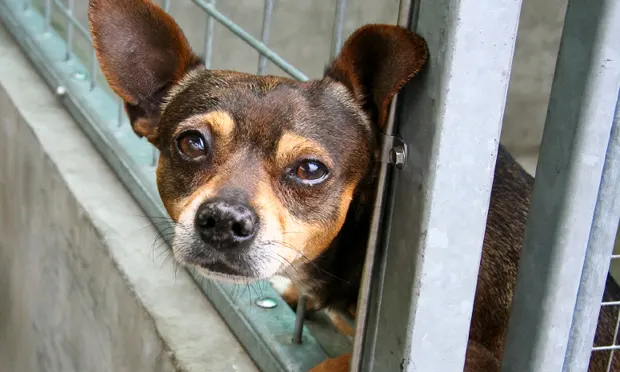How to Recognize Animal Abuse & What To Do About It

Veterinary professionals must be aware that they may encounter animal abuse cases in their practices and they could be the first line of defense against animal abuse. It is important, therefore, that every team member knows how to recognize an abuse situation, how to establish rapport with the client so they feel comfortable discussing the situation, and is familiar with action steps if abuse is suspected.
It is also important that veterinary professionals be aware of the studies that show a correlation between animal abuse and domestic violence, including child and elder abuse, so they understand that when they recognize and act regarding animal-abuse cases, they are likely helping other members of the family in addition to the animal.1-3
For example, 71% of women seeking shelter at a safe house for battered partners who reported owning a pet reported that their partner had threatened and/or actually hurt or killed one or more of their pets, although it was not easy for them to discuss.2 In one study, 26 women who had been the subjects of domestic violence reported that their male partners had also verbally and/or physically abused the household pet(s), yet the majority of the women were unwilling to discuss it with their veterinarian.3
Other studies have shown that children who live in violent households are more likely to be cruel to animals.4-6 In a survey of 860 college students regarding family violence and animal abuse, 60% of students who reported witnessing or perpetrating animal cruelty as a child also reported experiences with child maltreatment or domestic violence.7
Defining Abuse
Animal cruelty, abuse, and neglect are defined differently, according to the intent of the perpetrator. According to the AVMA:8
Animal cruelty is any deliberate act that, by intention or neglect, causes an animal unnecessary pain or suffering, including inflicting pain on an animal for the abuser’s enjoyment or amusement.
Animal abuse is the maltreatment of an animal regardless of the perpetrator’s intent, motivation, or mental condition. The perpetrator’s deliberate intent distinguishes cruelty from abuse.
Animal neglect is defined as the failure to provide an animal sufficient water, food, shelter, and/or veterinary care; lack of grooming; and lack of sanitation. These failures may be the result of ignorance, poverty, or other extenuating circumstances. This is the most commonly investigated situation.
Related Article: Animal Hoarders: Exploring the Clues
Identifying Potential Abuse
In the examination room:
Compare the patient’s injuries with the client’s history.
Take note if the client appears reluctant to provide a full history or if the client changes the history when repeating it to other team members.
Ask the client about his or her experiences when disciplining and housebreaking the patient.
Listen to children’s responses to questions about their pets.
Ask about other household pets.
Observe how family members interact.
Warning signs that could raise suspicion:
Patients with chronic injuries or medical conditions that go untreated
Other injuries that are healing, in addition to a new injury
Clients who use the services of several veterinarians
Clients who repeatedly bring in new puppies or kittens, but not adult or aging pets
Injuries attributed to unknown causes―clients often admit to accidental injuries but blame intentional injuries on unknown causes
Discrepancies in names and addresses
Multiple injured animals presented from the same household.
Reporting Abuse
First, know the veterinarians’ professional obligation. The AVMA policy states: The AVMA recognizes that veterinarians may observe cases of animal abuse or neglect as defined by federal or state laws or local ordinances. The AVMA considers it the responsibility of the veterinarian to report such cases to appropriate authorities, whether or not reporting is mandated by law.8
Second, all veterinarians and practice managers should be familiar with their state’s laws concerning reporting of animal abuse or cruelty.
When abuse is suspected by any team member:
Discuss the suspicion with practice management and senior colleagues and decide as a team any steps that should be taken.
Collect evidence to support any case of animal cruelty, abuse, or neglect. All notes made in the medical record can be used as evidence; the notes should include information provided by the clients about the patient’s housing, feeding, and care, and all the physical examination findings, including vital signs, body weight, and body condition. If possible, document the physical examination with photographs and video as well as descriptions in the medical record.
Report any suspected case to the appropriate authorities with the documented evidence. Every practice should be familiar with the local animal and human service agencies, including local animal control and law enforcement agencies, where animal cruelty, abuse, or neglect should be reported, because these agencies vary by state, and even by county.
Every practice should have policies in place so that the whole team understands the potential for animal abuse, recognizes the signs of possible abuse, and knows what steps to take when abuse is suspected. Always be aware of the family abuse correlation; after all, the veterinary healthcare team may be able to help not only the patient, but also the animal’s human family.